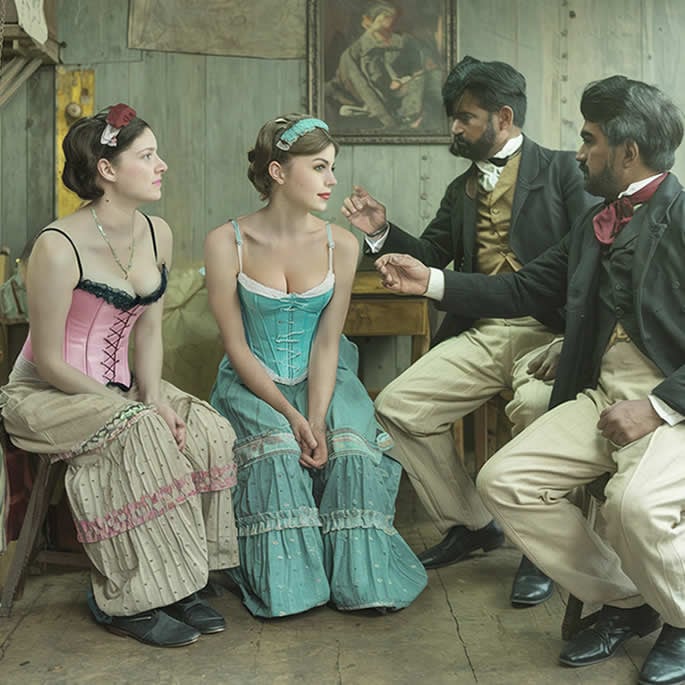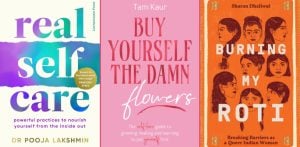the idea of Indian men having sex with white women was seen as a direct assault on British rule
In the shadows of British India, a hidden network of European prostitution flourished, challenging the very foundations of colonial rule. This scandalous trade, dubbed ‘White Slavery’, sent shockwaves through Victorian society and colonial administration alike.
From the bustling ports of Bombay to the dimly lit brothels of Calcutta, European women plied their trade, catering to both British and Indian clientele. The presence of these “white subalterns” threatened to undermine the carefully constructed racial hierarchies of the Empire.
As steamships and telegraphs connected continents, a new breed of international criminals emerged. Pimps and procurers from across Europe orchestrated a global network, funnelling women from the streets of Warsaw and Vienna to the exotic climes of South Asia.
Rudyard Kipling, the bard of the British Empire, immortalised this seedy underworld in his Ballad of Fisher’s Boarding-House. His portrayal of Anne of Austria, a white prostitute in Calcutta, offered a rare glimpse into a world often shrouded in silence.
We delve into the fascinating and questionable history of sex trade networks related to white women from Europe in colonial South Asia based on the research paper by Harald Fischer, an academic.
We’ll explore their origins, operations, and the anxieties they provoked among colonial officials and moral reformers alike.
The Lure to British India of ‘White Slavery’

The ‘White Slavery’ journey for a white woman heading for British India often began in the impoverished regions of Eastern Europe.
Traffickers, mainly men of Jewish background and other foreigners, targeted young women with promises of lucrative employment abroad.
Many of these men recruiting the women used guises like theatrical, teaching and governess positions to lure the young women. Others pretended to be wealthy business owners offering a life of riches to the women if they went on a trip with them.
However, some women had previous experience in prostitution before being recruited for work in Asia and knowingly chose this path voluntarily rather than being duped like others, albeit often driven by economic necessity. Some who worked in the sex trade abroad even managed to send money home or return to Europe after a few years.
Irrespective of choice, the reality of the journey for these women was, however, far grimmer.
The late 19th century saw the emergence of a vast international network trafficking European women to Asia. Two main routes emerged: the Western route to South America and the Eastern route to Asia.
From their home countries, the women were typically transported to Constantinople or Odessa. These bustling port cities served as staging grounds for the next leg of their journey eastward.
Egypt, particularly Port Said at the mouth of the Suez Canal, after its opening in 1869, played a pivotal role in this trafficking network.
Denounced by abolitionists as a ‘sink of lust’, Port Said was the gateway to Asia for many of these women.
From Egypt, the women were shipped to major seaport towns in British India. Bombay and Calcutta emerged as the primary entry points, with Goa potentially playing a secondary role.
The women’s passage was usually financed by their ‘fancy-man’ or pimp, who accompanied them as a pseudo-husband. This arrangement often trapped the women in a cycle of debt bondage, taking years to repay.
The pimps, or “souteneurs,” were highly mobile, constantly travelling between brothels in different Asian ports. This mobility made it difficult for authorities to take legal action against them.
Indian Cities with Structured Brothels for White Women

Upon arrival in India, the European prostitutes were integrated into a highly structured brothel system.
In major Indian cities, European prostitution was carefully regulated and segregated. Bombay, with the largest population of registered European sex workers, implemented a three-tier system of brothels.
First-class establishments, considered ‘extremely well conducted’, offered women ‘of a superior type’ at premium rates. These brothels provided imported alcoholic beverages and employed doctors to regularly check the women’s health.
Second and third-class brothels, concentrated in the infamous Cursetji Sukhlaji Road (known as safed galior ‘white lane’), housed European women alongside Japanese and Indian prostitutes. Conditions here were considerably less salubrious.
The brothel system was not confined to Bombay. Calcutta’s Collinga Bazar area, immortalised in Rudyard Kipling’s Ballad of Fisher’s Boarding-House, was home to dozens of European-run establishments.
The Collinga Bazar area was famously dubbed the “German barracks.” In 1910, the sex workers were moved to a more discreet location in the suburb of Ballygunge.
Rangoon and other cities adopted similar segregation policies. Authorities viewed this as the best method to control the “social evil” while maintaining a semblance of order.
The brothel system, run by European “mistresses,” was seen as a useful tool for enforcing decency. Mistresses acted as intermediaries between the police and the prostitutes.
However, this system of institutionalisation and segregation also served to hide the “disreputable elements” of European society from public view, preserving the illusion of white racial superiority.
Colonial Anxieties and “Semi-Oriental” Whites

The presence of European sex workers during the British Raj posed a significant challenge to colonial racial ideologies. These women represented a threat to the carefully constructed narrative of European racial and moral superiority.
They were seen as racially “white” but socially and economically subaltern.
Colonial officials struggled to categorise these women, sometimes resorting to “orientalising” lower-class European prostitutes. In Ceylon, Russian and Polish prostitutes were described as “semi-oriental.”
In the seedy underbelly of colonial society, white prostitutes occupied a precarious position. These women, already viewed as dangerous outcasts in their home countries, posed an even greater threat to the delicate racial hierarchy of the British Raj.
White prostitutes, seen as doubly transgressive for their profession and racial betrayal, found themselves at the very bottom of this hierarchy. Their presence in India and other British colonies was a constant thorn in the side of colonial administrators.
As colonial rule became increasingly fixated on racial superiority in the 1880s. The fear of “native” Indian men having access to white women was a major source of anxiety.
While European men’s sexual exploits with Indian women had been common practice in the first decades of British rule in India, the idea of Indian men having sex with white women was seen as a direct assault on British rule.
Even among the lowest rungs of colonial society, a strict pecking order existed.
Many Indian princes and wealthy locals frequented high-class European brothels, threatening the racial boundaries of colonial society.
The authorities’ approach to ‘White Slavery’ revealed tensions between pragmatism and moral idealism.
Some officials argued for the complete suppression of European prostitution to preserve “racial prestige.” Others feared this would lead to increased patronage of native prostitutes or a rise in homosexuality.
The official response to this challenge was multifaceted. British women engaging in prostitution were swiftly deported, while continental European women were tolerated but strictly regulated.
The debate revealed deep-seated anxieties about racial purity, colonial authority, and the moral foundations of British rule in India. It exposed the contradictions inherent in the imperial project.
Moral Crusaders battling ‘White Slavery’

As news of the ‘White Slavery’ sex trade reached Victorian Britain, it sparked a moral panic that reverberated back to the colonies.
Hence, the late 19th century saw the rise of a powerful Anti-White Slaverymovement in Britain.
England, with its busy passenger ports, became a key trafficking route of these women, not just to British India, but to other parts of the world as well.
Due to this growth of the ‘White Slavery’ problem, Britain emerged as the home of pioneering anti-trafficking groups.
A coalition of Christian ‘social purity movement’ campaigners and early feminists took up the cause with zealous fervour, supported by lobbying activism in London.
These activists brought their crusade to the colonies, challenging the pragmatic approach of many colonial officials. They argued that the very existence of European prostitutes undermined Britain’s “civilising mission.”
>Organisations like the National Vigilance Association (NVA) and the Social Purity Alliance lobbied for stricter laws and increased policing of the sex trade. Their efforts culminated in the Criminal Law Amendment Acts of 1885 and 1912.
The campaign against ‘White Slavery’ soon acquired a transnational dimension. International conferences were held, and national committees were established in countries across Europe and beyond.
In British India, branches of the NVA and other purity organisations sprang up in major cities. These groups pressured colonial authorities to take more stringent action against the European sex trade.
The case of Ceylon (modern-day Sri Lanka) illustrates the impact of these campaigns. John Cowen, a Scottish abolitionist, led high-profile campaigns in Ceylon, Burma, and Singapore. His tactics included public demonstrations, leafleting, and naming and shaming brothel keepers.
Another missionary who tried to help women caught up in the ‘White Slavery’ trap in Calcutta was Mr Homer C. Stunz of the Methodist Episcopal Church, originally from the USA.
Stunz served as pastor, Presiding Elder, School Superintendent and as editor of “The IndIan Witness”, a Methodist publication.
Colonial authorities often resisted these efforts, arguing that complete suppression would lead to greater evils. They preferred a policy of regulation and segregation.
The clash between moral reformers and colonial pragmatists revealed deeper tensions within the imperial project. It highlighted the growing influence of metropolitan public opinion on colonial policy.
The Legacy of the ‘White Slavery’ in South Asia

The crusade against ‘White Slavery’ had mixed results. While it led to increased policing and some high-profile deportations, it also drove much of the trade underground, making it harder to monitor and control.
In Ceylon, the suppression of regulated brothels reportedly led to prostitutes being ‘scattered all over town’, causing new problems for authorities and residents alike. Similar complaints followed abolition efforts in other cities.
The campaign also had unintended consequences for Asian sex workers. As European prostitution became more tightly controlled, there was a corresponding increase in the trafficking of Japanese and Chinese women to meet demand.
The ‘White Slavery’ panic left a lasting imprint on colonial policy and discourse.
It highlighted the tensions inherent in the imperial project, particularly the gap between lofty civilising rhetoric and messy on-the-ground realities.
The European prostitution networks in colonial South Asia left a complex legacy. They challenged racial hierarchies, exposed the contradictions of imperial rule, and forced a re-evaluation of colonial moral standards.
The story of these “white subalterns” complicates our understanding of colonial society. It reveals a more nuanced picture of race relations and social hierarchies in British India.
In addition, it also shows that not all of these women were forced to go to British India. Many went willingly due to their economic needs, a chance of perhaps a different life and the opportunity to send money back to where they came from.
The global nature of the prostitution networks also highlights the interconnectedness of the colonial world. It shows how developments in one part of the empire could have far-reaching consequences elsewhere.
The question does arise how much concern was ever given to the Indian women who did not have any rights during colonial rule to be used and abused as sex slaves. In comparison to the concerns related to ‘White Slavery’.
Ultimately, the story of ‘White Slavery’ in British India reveals the complex interplay of race, class, gender, hypocrisy and morality that shaped colonial rule. It’s a testament to the often-overlooked undercurrents of empire, which are not at the forefront of discussion.






























































